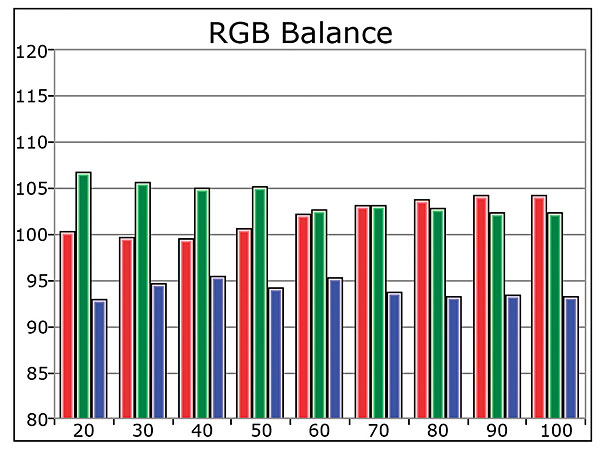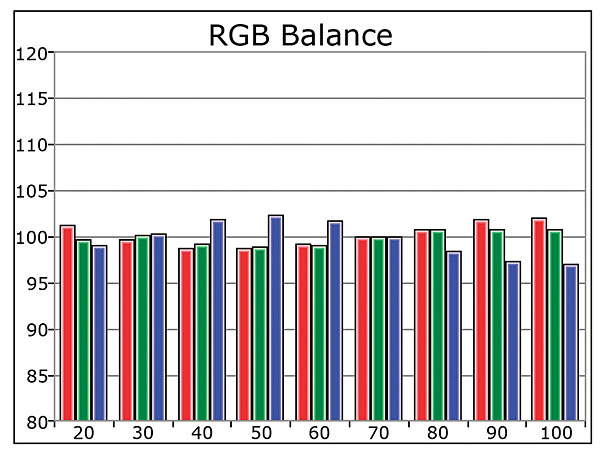Sony VPL-HW65ES 3D SXRD Projector Review Test Bench
Full-On/Full-Off Contrast Ratio: 22,950:1
Pre-calibration measurements were made in Cinema Film 1 preset at the default settings. Post-calibration measurements were made in the User mode. Maximum contrast measurements were made with Advanced Iris on, Dynamic Control at Full, and Lamp Control set to High. With these settings, and on my 90-inch-diagonal, 1.1-gain Stewart Filmscreen Cima Neve projection screen, the Sony’s black level measured 0.001 foot-lamberts and peak white 22.95 ft-L for a contrast ratio of 22,950:1.


Highest peak brightness was delivered by the default settings in the Game mode: 70.4 ft-L. Fan noise in this and other modes with Lamp Control set to High was reasonably low, though it was nearly nonexistent in Low Lamp Control mode. Selecting Low Lamp Control caused picture brightness to drop by nearly 50%, however, making the slight reduction in noise (and resulting extension in lamp life) not really worth it.
Before calibration, the Sony’s D65 color temperature preset displayed a minus blue bias at all IRE levels. The Delta E of its pre-cal grayscale averaged out to 8.4; calibration improved that number to 2.0, with a high of 3.5 at 100% brightness. (Delta E is a figure of merit that indicates how closely a display adheres to the Rec. 709 HD color standard. Experts generally agree that levels below 3 are visibly indistinguishable from perfect color tracking.)
The Delta E of the Sony’s color points in its Cinema Film 1 mode’s default settings averaged 5.5. Calibration using the Custom Color Space color management system adjustments improved that to 3.5.

With the 2.4 Gamma preset selected, gamma in the Cinema Film 1 mode averaged 1.83 and displayed a gradual brightness boost at steps over 50 IRE. Post-calibration, gamma was considerably more linear, averaging 2.1.
Picture uniformity was excellent, though my test unit did show a single stuck pixel. The Sony passed all of our standard- and high-def video processing tests.—AG





























































